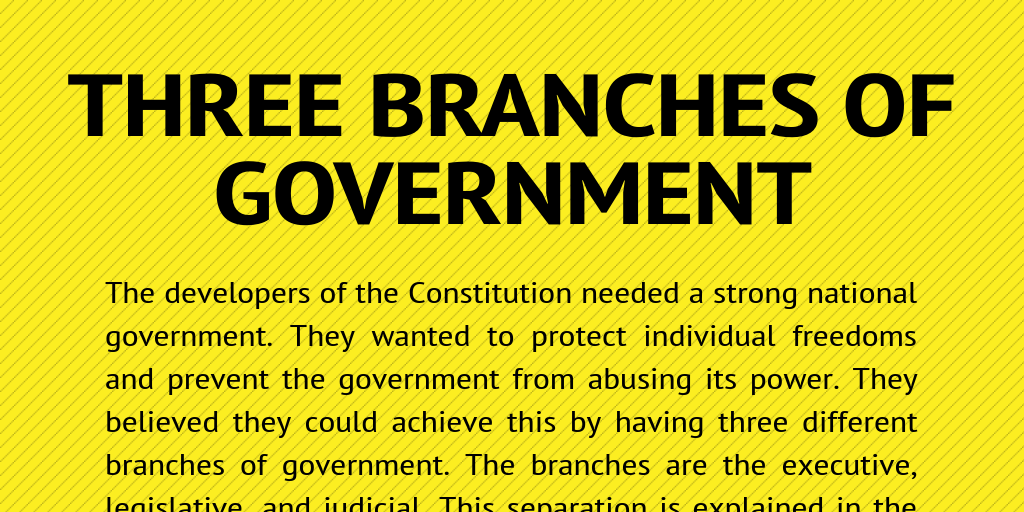
Which branch of the government possesses the most power? This question might evoke playful debate among friends or a deep philosophical discourse among political enthusiasts. To explore this topic, we must first examine the intricacies of each branch: the Legislative, the Executive, and the Judicial. Each has distinct roles, yet their functionalities intertwine to form the backbone of the American political system. The challenge arises in determining how their powers eclipse or complement one another, leading to a nuanced understanding of governance in the United States.
To start, imagine a grand stage where each branch of government plays a crucial role. The Legislative branch, comprised of the House of Representatives and the Senate, is often seen as the lawmaker. They craft legislation that can profoundly influence the fabric of the nation. Members of Congress are the representatives of the populace, elected officials who advocate for the interests of their constituents. This branch’s power is manifested in its ability to create laws, control federal funding, and declare war. However, the Legislative does not wield unchecked power. Its authority is subject to the checks and balances embedded in the Constitution, particularly the roles of the other branches.
Transitioning to the Executive branch, we encounter the office of the President. This branch executes and enforces the laws created by Congress. The President holds significant sway over foreign relations, commanding the armed forces and steering national policy. Moreover, the Executive possesses the power of veto, which enables a President to reject congressional legislation and dramatically alter its trajectory. However, this veto can be overridden by a two-thirds majority in both chambers of Congress, illustrating the inherent limitations imposed upon executive authority.
Finally, we arrive at the Judicial branch, epitomized by the Supreme Court, which interprets the laws and has the final say on constitutional questions. The power of judicial review allows the Court to declare legislation or executive actions unconstitutional, effectively nullifying them. This unique ability empowers the judiciary to act as a guardian of constitutional liberties, ensuring that neither Congress nor the President exceeds their mandated authority. Thus, while the Legislative may draft laws and the Executive may implement them, the Judicial branch retains the ability to affirm or dismantle these actions, rendering it a vital component of governmental checks and balances.
Given this framework, a question arises: does the prominence of a branch’s power hinge upon its visibility or the direct impact of its actions? Many might argue that the Executive, with the figure of the President at the forefront, appears to wield the most influence, especially in media portrayals. The ability to exercise executive orders, conduct diplomacy, and rally public opinion through platforms makes the Executive branch a powerful player in the arena of national governance. However, this perception shouldn’t obscure the underlying structure of governmental authority.
One might further contend that the essence of power lies in the Legislative branch, which ultimately holds the purse strings and dictates the laws that govern society. It is Congress that shapes the legislative agenda, initiating the very policies that define a nation’s direction. Yet, that leadership is contingent upon public sentiment and electoral cycles, creating a sense of volatility that can both bolster and undermine its authority.
On the other hand, the Judicial branch quietly exerts a critical influence through its interpretations of laws and steadfast adherence to constitutional principles. The enduring authority of Supreme Court rulings can shape legal standards for generations, often without the public recognizing its immediate impact. Landmark decisions on civil rights, healthcare, and environmental regulations serve as testament to the profound authority held by the judiciary, specifically in defining social norms and legal interpretations.
Moreover, the interplay among these branches can generate fascinating outcomes. Consider the concept of gridlock, wherein an impasse between the Legislative and Executive branches leads to stalled policy initiatives. It is during these periods that the Judicial branch may find itself at the center of pivotal decisions, acting to protect citizens’ rights while navigating the turbulent waters of political tension. Such dynamics highlight a fusion of power rather than a straightforward hierarchy.
In the broader context of governance, assessing which branch holds the most power may ultimately reflect not just an empirical analysis but also philosophical considerations about the nature of authority and the principles of democracy. Each branch possesses instruments of power that can be judiciously wielded, influencing the lives of citizens across the nation. Thus, the true essence of governance may not reside in a singular branch’s dominion but rather in the harmonic tension between these essential governmental entities.
In conclusion, while the playful question of which branch of government wields the most power can spur lively discussion, a deeper examination reveals the intricate balance of authority. Each branch operates within a framework designed to ensure neither overreaches its mandate. The dialogue surrounding this topic offers an enriching perspective on the nature of democracy and the perpetual pursuit of a government that truly reflects the will of the people. As you ponder this subject, remember: the strength of our governance lies not solely in the power wielded by any branch, but in its capacity to function collaboratively for the common good.
